By: Richard Vecchio Date: 8/3/15
Summary
The Testors 1/24 Jaguar XJ220 plastic model kit was utilized as the basis for the build. Six distinct pieces make up the models body. Even so, the completed body is relatively light because it is formed from thin plastic. I fear that durability may be a problem but plastic welder can fix almost anything. The British Racing Green with yellow accents paint scheme is loosely based on the factory supported endurance cars run from 1993-1995. I selected a Scholer Pantera chassis for the build and fabricated custom side and front pans from .062 inch thick brass plate. Power is currently supplied by a Falcon 7 (at some point a snappier Hawk motor will be installed). Below is an image of the finished product.
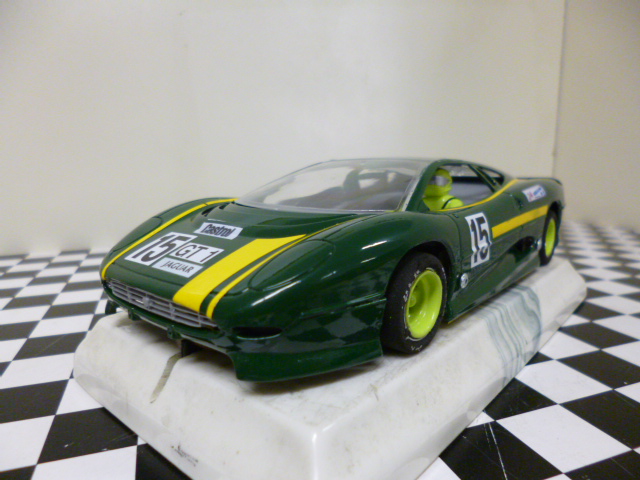
Background
Since its inception several years ago, True Scale GT1 has developed into one of our most competitive classes. Rules for this class dictate a Scholer or Plafit production chassis and a sealed Falcon 7 or Hawk 7 motor. All competitors utilize a similar custom front and side pan configuration designed to improve handling. In addition, the GT1 and Group C bodies specified for this class are very low, and are characterized by a relatively long wheelbase. All of these factors facilitate very fast and very close racing. The latest stepwise improvement in lap times can be attributed to the addition of the Hawk 7 motor as an optional power plant. The Hawk has more snap and better brakes than the Falcon, yielding improvements in lap times of .1 seconds or more.
The most popular body for GT-1 is the Ferrari Enzo. Although not an actual Group C or GT1 competitor, the Enzo has been allowed in the True Scale GT1 class because of its low cost and similar dimensions to actual Group C and GT1 rides. Several racers have experimented with other bodies including the Jaguar XJR12, Nissan R390, Toyota GT-One, Porsche GT1, Porsche 956/962 with some success.
The Build
Several Jaguar XJ220 plastic model kits are available. I used the Testors 1/24 kit. It appears that the major body parts of the Tamiya 1/24 are quite similar but the Tamiya kit as a whole is a bit more detailed. An AMT kit is also available in 1/25. It is much smaller and would not, in my opinion be competitive with the much wider 1/24 scale rides.
A 1/24 Testors Jaguar XJ220 sat on my shelf of unbuilt models for several years (see below for box art). In June of 2015, I decided to build my XJ220 to compete in our True Scale GT1 class. The Testors model is quite wide, light and low and has a relatively long wheelbase. As such, it should be a competitive car. The model body is composed of six main parts including the upper body, two side/door panels, rear diffuser, rear wing, chin spoiler. Plastic welder was used to affix the various parts and should create a strong bond. However the model is formed from thin plastic and durability may be a problem.
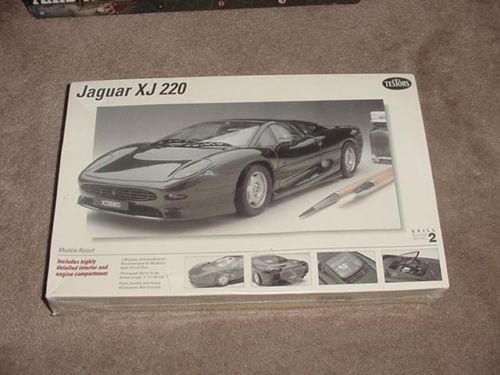
Before painting the model, I did a little research and found that the Jaguar XJ220 raced at Le Mans and other endurance events in the early to mid-90s. I found that many of the race cars were painted British Racing Green with yellow accents and I loosely patterned my paint and decal scheme after these cars. Below are a couple of images of cars that ran at Le Mans in 95. Pattos Place and Grand Prix Models carry some very accurate decal sheets and one is shown below, however at $14 - $20, they are a bit pricey.
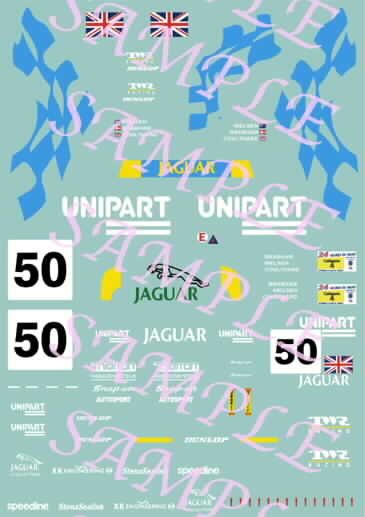
For the Jaguar XJ220 chassis, I selected an older model Scholer SCH1102001 1/24 Pantera chassis formerly used on one of my True Scale Trans Am cars. Custom side and front pans were cut from .062 inch brass sheet. The final chassis configuration is shown below.
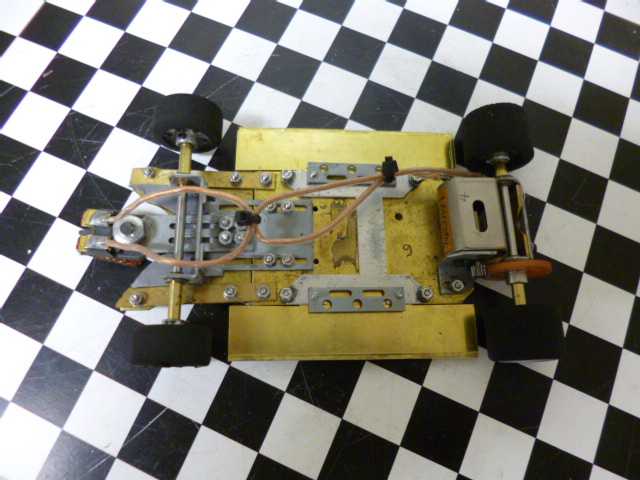
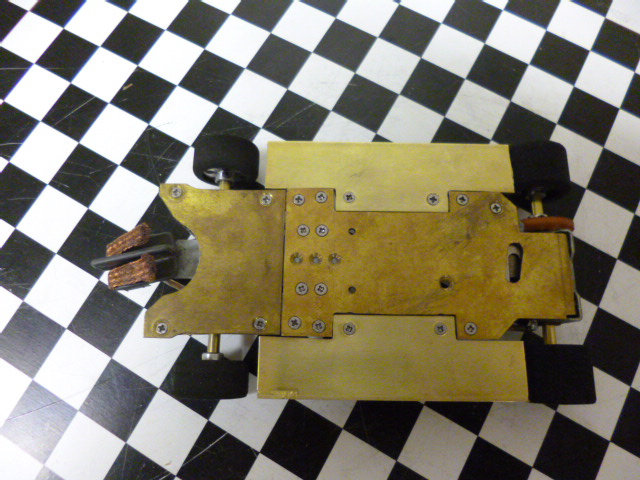
The completed project is shown below
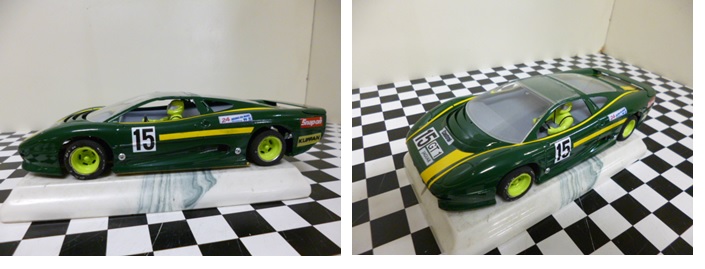
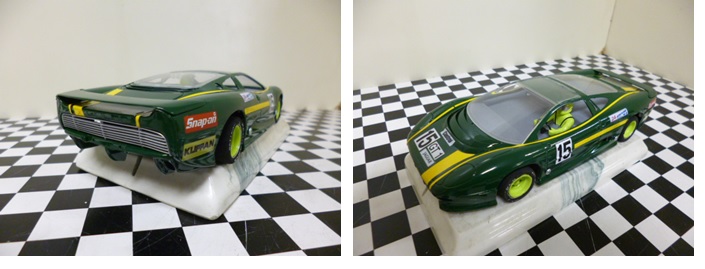
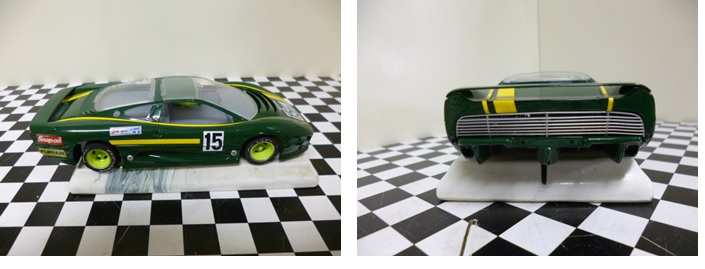
Test Results
Initial testing was completed on 7/20/15 on Electron Raceways Red Lane. The track was cleaned and sprayed a few days prior to testing and conditions were excellent. The Jaguar was powered by an average Falcon 7. A new Hawk 7 is on my bench and, after a break-in period will find its way into the Jaguar. The Hawk motors seem to be a bit quicker and have better brakes. In practice, the Hawks tend to yield better lap times by about .1 seconds. Ah, but I digress. The car performed quite well turning a fast lap of 4.93 seconds. As a comparison, I tested my Ferrari Enzo and my record setting Toyota GT-One (shown below). The Enzo also turned a 4.93 while the Toyota ran a blistering 4.85. I will update this section after a Hawk is installed and the car has completed an official race.

History of the XJ220
The automotive engineering and manufacturing conglomerate, British Leyland (BL) constituted about 40% of the UK market and owned some profitable makes including Jaguar, Land Rover as well as the very popular Mini. BL, however, had fallen on hard times during the 1970s. Serious problems with its labor union, poor management, reliable imported vehicles from Japan and the oil crisis led to its downfall. Instead of allowing an orderly bankruptcy proceeding, BL was essentially nationalized. Too bad GM couldnt see the handwriting on the wall, ah but I digress.
Although Jaguar was a marginally profitable make, it lost much of its luster after production of the E-type ceased in 1975. The E-Type was a great looking car and, in my opinion, way ahead of its time. Unfortunately, the E-Type suffered from poor reliability throughout its production cycle (from 61-75). Some interesting light weight, low drag cars were produced in the early 60s (the Klat lightweight version is shown below). The last incarnation (series 3) E-Types were fitted with a V-12 power plants. Although the E-Type never managed to win at Le Mans, it was successfully campaigned in SCCA by Group 44. See image below.
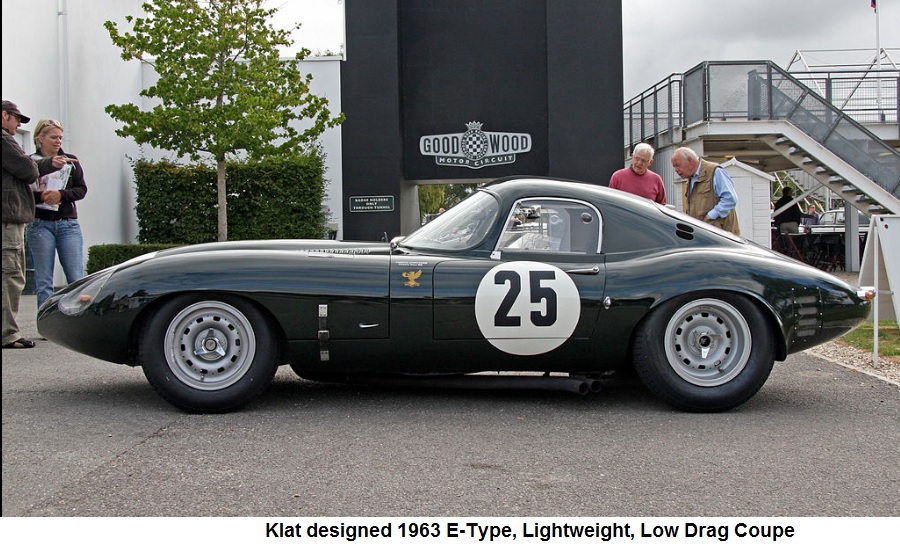
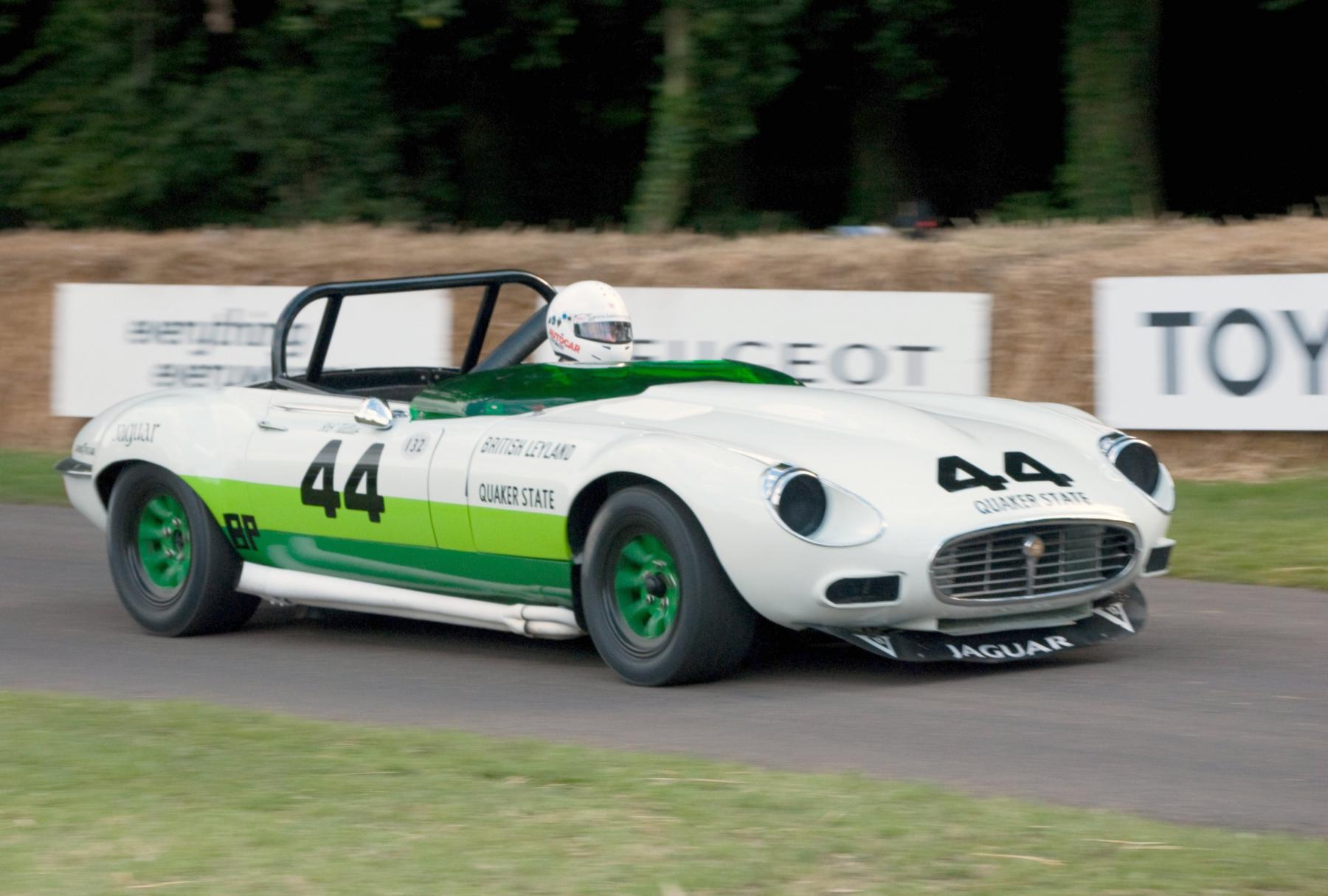
In the early 1980s Jaguar was tasked with developing a plan to show that it was an economically viable company capable of surviving on its own. Management worked tirelessly marketing the brand and developing a credible product plan. Finally, in 1984, Jaguar was privatized.
In an attempt to regain some of the luster of the brand, Jaguar partnered with Tom Walkinshaw Racing (TWR), to develop the XJ-S into a European Touring Car Championship winner. In 1984 this goal was achieved, boosting morale of the workforce as well as the Jaguar image. Below is an image of the racing version of the XJ-S.
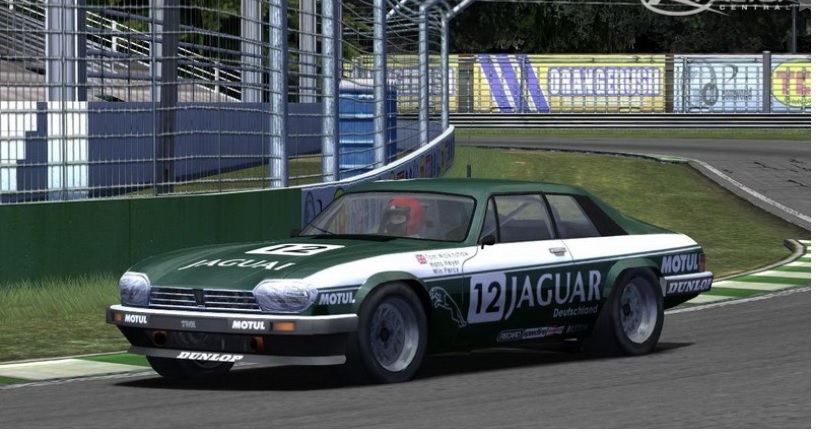
During the mid-1980s the Jaguar/TWR partnership designed and produced some very successful endurance cars that raced in the IMSA and Group C championships. The first of the series was dubbed the XJR 6 and debuted in 1985 and collected its first win at Silverstone in 1986. The original design was refined and improved over time with the last of the series dubbed the XJR 12 racing in 1990. The most successful of the series was the XJR 9 which won the World Championship, Le Mans and the 24 hours of Daytona (see image below)
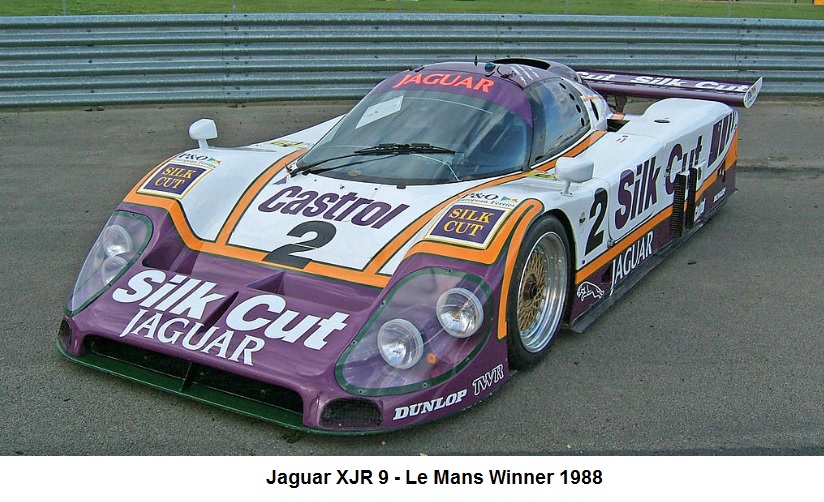
Jim Randle, Jaguars Engineering director at the time thought that the XJR series of cars were too far removed from the production Jaguars and had a bigger idea: produce a road-going supercar designed to race in the Group B (a class being developed by FIA). The engineering department was already stretched very thin working on the XJ and a major redesign of the XJ-S. Jim called for volunteers to work weekends without pay on a concept car. In the end, twelve individuals answered the call and became known as the Saturday Club.
The concept car was designed and built in about 10 months at very little cost to Jaguar. Randle called in favors from component suppliers and engineering companies that had worked for and supported Jaguar in the past. In return he offered public recognition for their assistance and the possibility of future contracts from Jaguar. The concept car was dubbed the XJ220 (the 220 was the target top speed in miles per hour). Its design was quite complex and featured a 6.5 liter V12 racing engine, all-wheel drive, four wheel steering, jack knife doors, an on-the-fly adjustable aerodynamic wing and a sophisticated Alcan bonded honeycomb aluminum structure.
The concept car (shown below) was unveiled at the 1988 British International Motor Show held at the National Exhibition Center in Birmingham, England. The car received rave reviews and garnered serious interest from a throng of enthusiasts ready to plunk down wads of cash to own such a super car. Although the XJ220 was not initially envisioned as a production sports car, the reception at the Motor Show changed all of that. Jaguar embarked on a feasibility study and concluded that a production run of XJ220 was not only technically feasible with some engineering changes but could be a very profitable venture indeed. In December of 1989, Jaguar announced its plan for a production run of from 220-350 cars. The price was set at $536,000 (and subject to inflationary index adjustment) and Jaguar quickly collected 1,500 deposits of $92,500 each returning all but 350 (the maximum subscription)
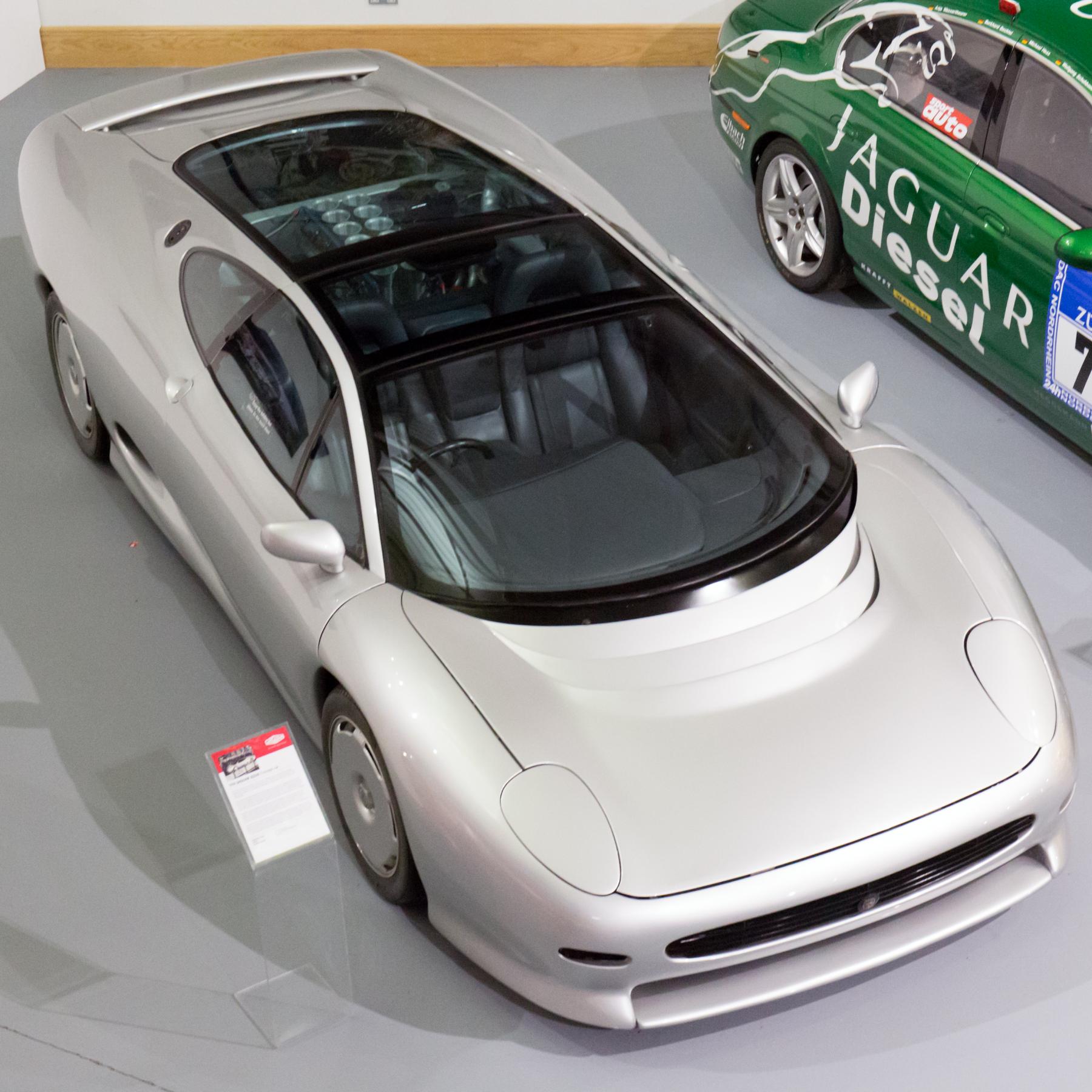
The production version was completed in June of 1992. Although it was visually similar to the concept car, it was in fact quite different, and in my opinion, much less desirable. Gone was the 6.5 liter, 700 horsepower V12. It was replaced by a much lighter and shorter 542 horsepower, 3.5 liter twin turbo V6. As a result, the chassis was redesigned, shortened and lightened to account for the production power plant. Gone were the all-wheel drive, four wheel steering and jackknife doors.
In addition to its production configuration, several factors led to poor sales performance of the production version of the XJ220. By the time the production version was ready for delivery, indexing led to a whopping price increase of about $370,000. In addition, a serious recession coupled with the collapse of the supercar market caused many contracted buyers to renege on their commitment. These same buyers claimed that specification changes rendered the contracts void. In the end, a judge sided with Jaguar. Production ceased in 1994 with only 275 cars produced, many of which had not been sold. The last sale from this production run yielded a disappointing $236,000.
A racing version of the XJ220 dubbed the XJ220 C was introduced in 1993 and won its first race at Silverstone (see image below for the Silverstone winner). Three works XJ220-Cs were entered in the 1993 24 Hours of Le Mans race, in the newly created Grand Touring Class and won, beating Porsche by two laps However, the class win was revoked when the Jaguar XJ220 C was controversially disqualified for failing to run with catalytic converters. Below is an image of the disqualified, factory supported XJ220 C.

Four XJ220s were entered in the GT1 class for the 1995 24 Hours of Le Mans. Neither team had Jaguar or TWR backing. The Jaguars were soundly beaten by the McLaren F1 GTR. So came to an end Jaguars big plans for racing version of the XJ220. Below is an image of one of the 1995 Le Mans cars.















